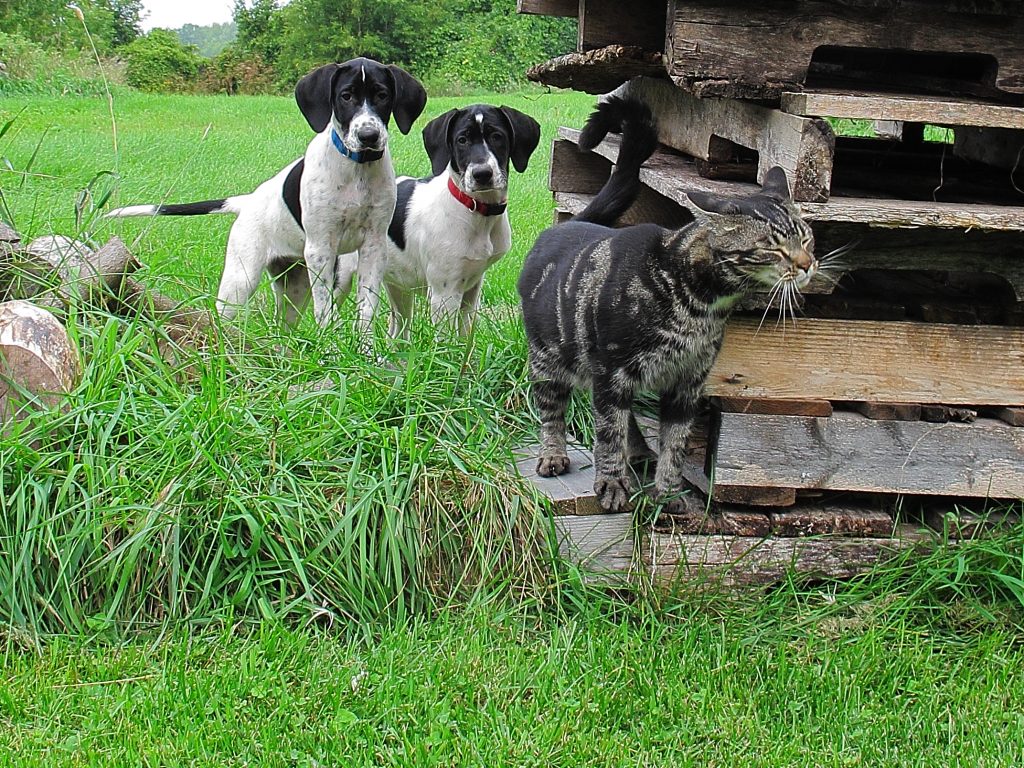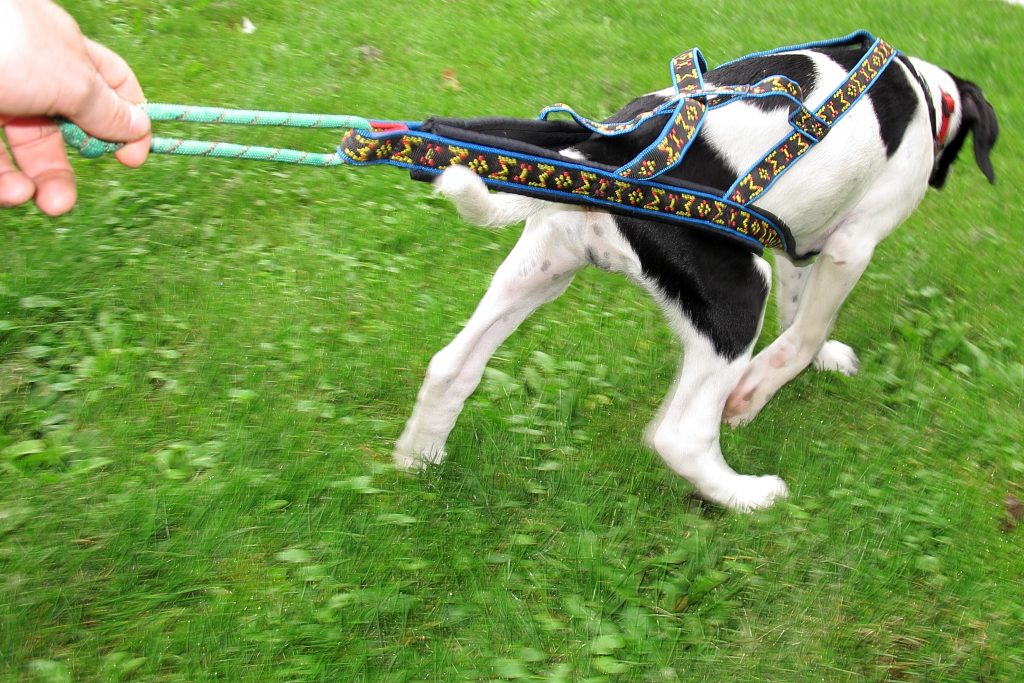You might feel your dog is too young to start physical work, or you might not be ready yourself to start running, riding or skiing, but that doesn’t mean you can’t start getting your dogs ready to become your harness working champion.
Harness sports are more than a dog simply pushing into a harness. Your dog will need to understand what is expected from her in different situations and how to react accordingly.
This will require developing your dog’s abilities to offer the appropriate behaviors, some initiative and some level of communication between your canine partner and you.
Don’t worry you don’t need everything to be perfect to start getting out on the trails, perfect builds with practice and experience; but you do need a minimum of good behavior, and the better your dog and you already work together, the more fun it will be for both of you to get on the trails.

Develop solid behaviors and communication:
- For you, your dog’s and other users safety on the trails
- To increase your dog’s confidence
- To assure you are always welcome on the trails
- And mostly because a solid working bond with your dog is what makes the magic of canine sports
How soon can you start off trail work? I start with my 10 week old puppies. Good behavior on the trail is no more than the transfer of good behavior all around. Developing a good harness puppy is not all specific to harness work but all good citizen behaviors can be transferred to become an awesome harness dog. Here are examples of general principles that will prepare your puppy for harness work.
- Impulse control
- Proper environment awareness
- Being comfortable with being manipulated
- Development of initiative
- Desire to please
If you don’t have the experience or you are not confident in your current abilities, you can get the help of any good positive reinforcement dog trainer or behaviorist. A dog trainer does not need to be specialized in harness dog sports to educate you in ways to develop valuable behaviors, confidence, and a working bond with your dog/puppy. It is crucial you work with positive techniques! It can all be done with fun games.
You are not looking to coerce your dog into harness work. Running with you will be a fun activity for which your dog will participate because it is fun. Running will ultimately become the reward for all the good behaviors presented while in harness. It can’t get any better than the work being the reward for itself.
There are more specific behaviors that can also be started with your puppy:
Directions (Gee, Ha)
Standing up front
Walking up front
Walking by/ignore a distraction
Slowing and speeding up
Indeed, all of this can be learned in harness, on the trail with practice. That’s how most sled dogs learn, in the team working behind accomplished lead dogs. Without accomplished lead dogs to follow, there may be a little more trial and error for your dog to pick up the right habits… or you can prepare with exercises off the trail.
Why is training behaviors off the trail (to later transfer on the trail) so effective?
- Environment control – you can assure an environment that feels safe, without distraction and less excitement.
- Easier to reward and possibility to mark the behavior with better timed reward. Apart from praise (which is not always a good thing -see http://rundogs.ca/when-words-become-noise) you can hardly provide rewards to mark specific behaviors while running.
- Less room for error favors speedy learning. For example, if you practice gee and haw on a leash, with the command always associated to the appropriate direction, without trial and error, your dog will associate the word quicker to the proper choice.
- You can start with puppies and double duty the learning games with keeping your puppy busy.
- Learning can be integrated with your daily routine, taking minimal extra time.
- Instead of one long session, games can be short, spread throughout the day and wont overwork younger dogs’ distractible brains.

Off trail work is not only for young pups
Even with your accomplished harness dog, bonding and behavior work will be beneficial. As an example, one of my dogs developed some confidence issues after a few bad experiences in races. Instead of insisting on working on her confidence on the trail, we put the harness off to the side for a few weeks and engaged in a Rally O class. I picked Rally O as an activity in the presence of other dogs that would offer a safe environment for Mopus and I to work together and rebuild her focus on me rather than the newly developed worries. It worked. After a few weeks off the trail, with fun work solely focused on our working relationship, Mopus regained her confidence and my great trail partner was back.
Keeping working on simple exercises and games off the trail will keep reinforcing the important behaviors, even once they are acquired. Keep playing, it adds variety into your working relationship with your dog and can only strengthen your bond.
Always remember that the journey is ongoing and must be fun.
NOTE: When to start working a puppy in harness is an other question and the subject of much debate. It is my opinion that one of the main issue in this debate is the assumption that “starting exercise” is binary: on or off. That is not how real life works. Puppies are active by nature, to structure there exercise time may not equate to over working a puppy. It is possible to play with a puppy in a way that is productive and non harmful. I do such thing with my puppies.
For a more expert take on the question with well elaborated argument see https://www.mylamedog.com/post/what-is-the-logic-behind-not-exercising-puppies-until-the-growth-plates-are-closed



